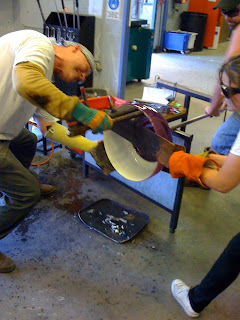I've been looking at artists who use Duraclear and Duratrans in their work.
I really love Melbourne artists Lyndall Brown and Charles Green.
They started working together as a collaboration in the late 1980's. in their work they create illusory worlds that blur the boundaries between fact and fiction, past and present. They have a shared interest in history and the concept of "memory as archive" - meaning I think, that they use visual records such as old photos, documentation of historical events, etc. as this archive from which they make constructed scenarios that are like strange dreamlike memories. They began by putting together montages in which different views of cultural, social and historical information could be layered to make a new history (or memory). This technique soon led them to rediscover painting - they began to faithfully reproduce these montages as actual paintings and this in turn led them on to start photographing the finished paintings and turn them into the large Duratrans lightboxes that they are now well known for.
The lightboxes have the effect of turning their paintings into huge, magical lantern slides that have a very nostalgic feel to them.
The strange juxtaposition of images, gathered together from such disparate sources as illustrations from old anatomy books, early French and Japanese photography, through to images of earth from space and photographs of beautiful evening skies, combines with the intersection of traditional painting and digital technology to give these works a surreal, ghostly other-worldly effect that is quite sublime.
Using the back-lit Duratrans lightboxes lends these works a transcendental quality that is very like that of traditional stained glass windows, they are beautiful and powerful in a way that is almost spiritual even though they are constructed out of materials that are in everyday commercial use.
They are represented by Arc One Gallery in Melbourne.
http://arcone.com.au/index.php?navi=Artists&navj=Profile&aid=1&navk=LYNDELL%20BROWN%20&%20CHARLES%20GREEN



















































